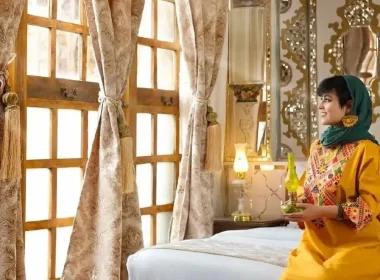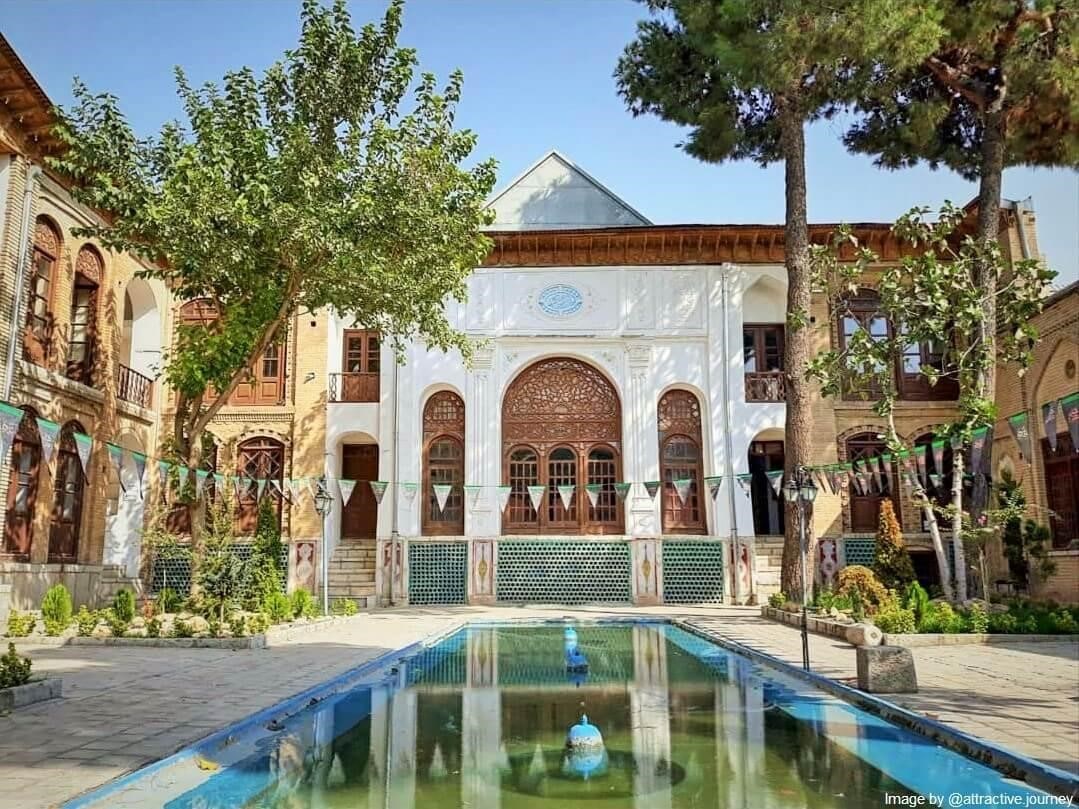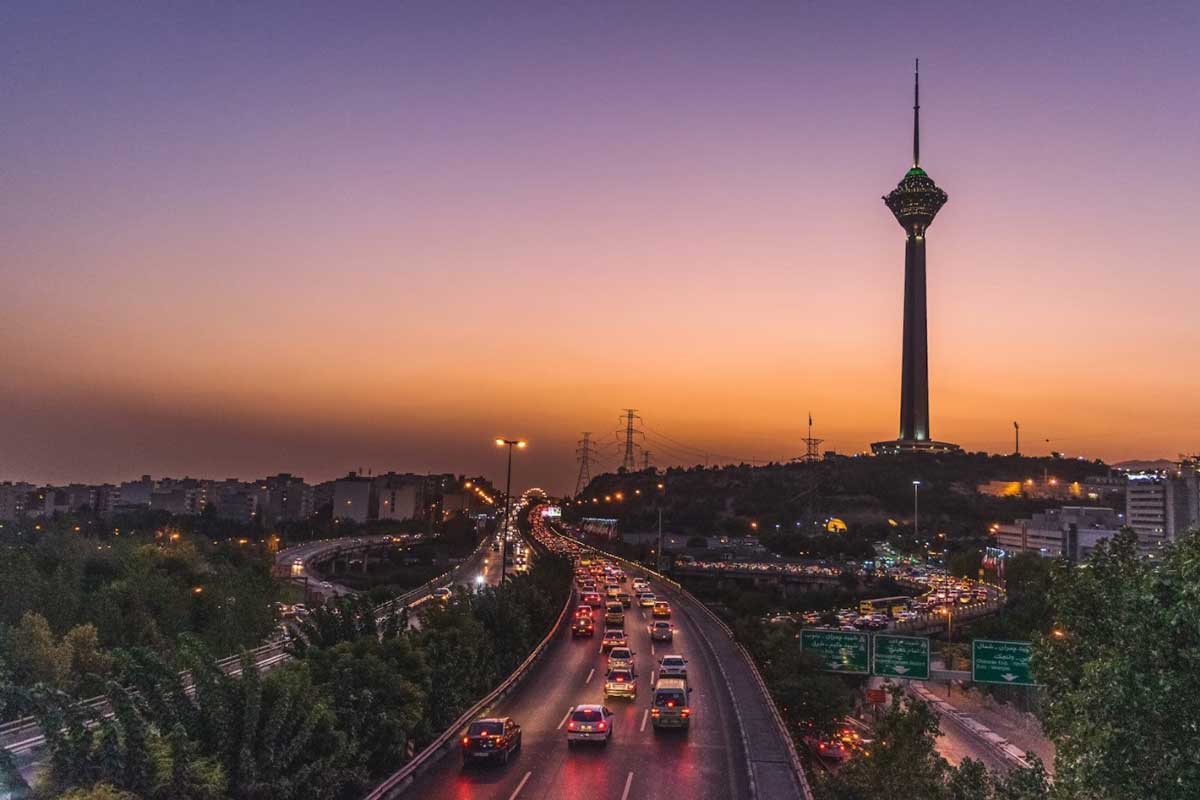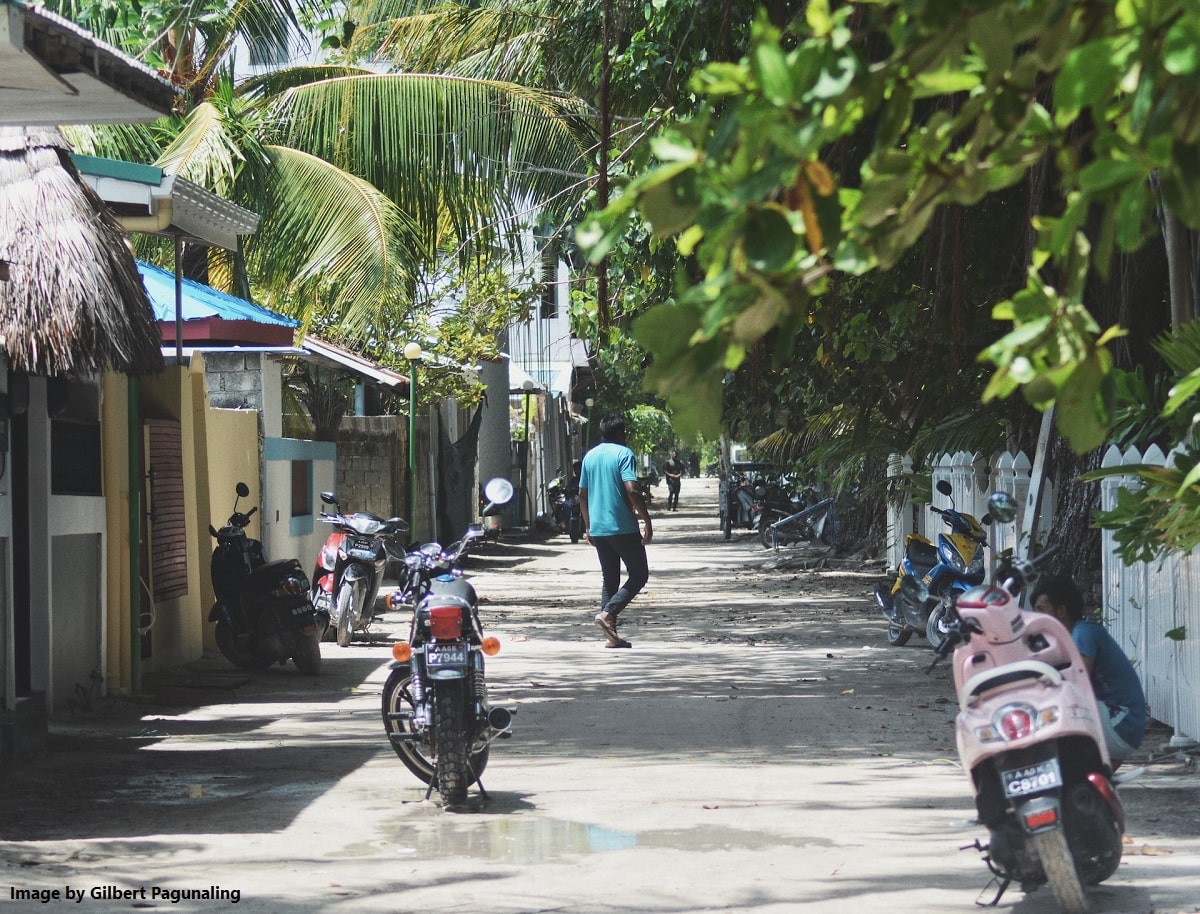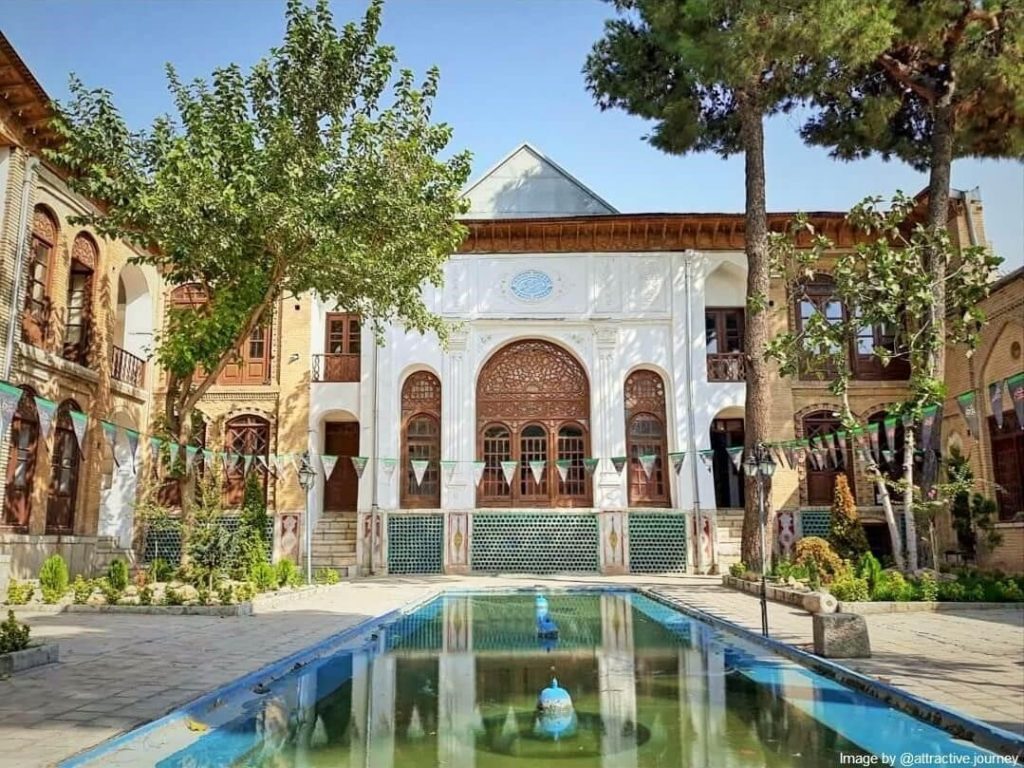
Kermanshah is the 9th largest city in Iran and the largest Kurdish-majority city in the western regions. This city was considered the second capital of Iran during the Sassanid period. However, most of the historic attractions of Kermanshah date back to the Qajar period. Takyeh Beyglarbeygi is one of the main Kermanshah Tourist Attractions, which was included in the Iran national heritage list in 1996.
The other name of this Takyeh is “Emarat-e Farrash Bashi”, in the old areas or historic districts of Kermanshah city. This historical work was built in Bigler Beigi Alley in Modares Street, the old Feyz Abad neighborhood in Kermanshah.
This complex includes a museum for manuscripts and calligraphy and another for Zagros Paleolithic objects, which are open to the public.
The History of Takyeh Beyglarbeygi
The construction of Takyeh Beyglarbeygi began in the Qajar period in 1892 AD. It was completed in 6 years. Also, the construction of the interior and exterior decoration of the Takyeh including mirror work and plasterwork has taken about 11 years. This building was built by a person named Khadim al-Hussein Abdullah Khan Farrash Bashi (nicknamed Beyglarbeygi) who was among the influential officials of Kermanshah during the Qajar rule.
Then, The Iranian Cultural Heritage Organization acquired the Takyeh in late 2001 and spent about two years restoring and renovating it. After that, the administration inaugurated the calligraphy museum in this building. Historical documents and manuscripts are preserved in this museum. In addition, in 2008, the cultural heritage organization launched the Zagros Paleolithic Museum in the south wing of the museum.
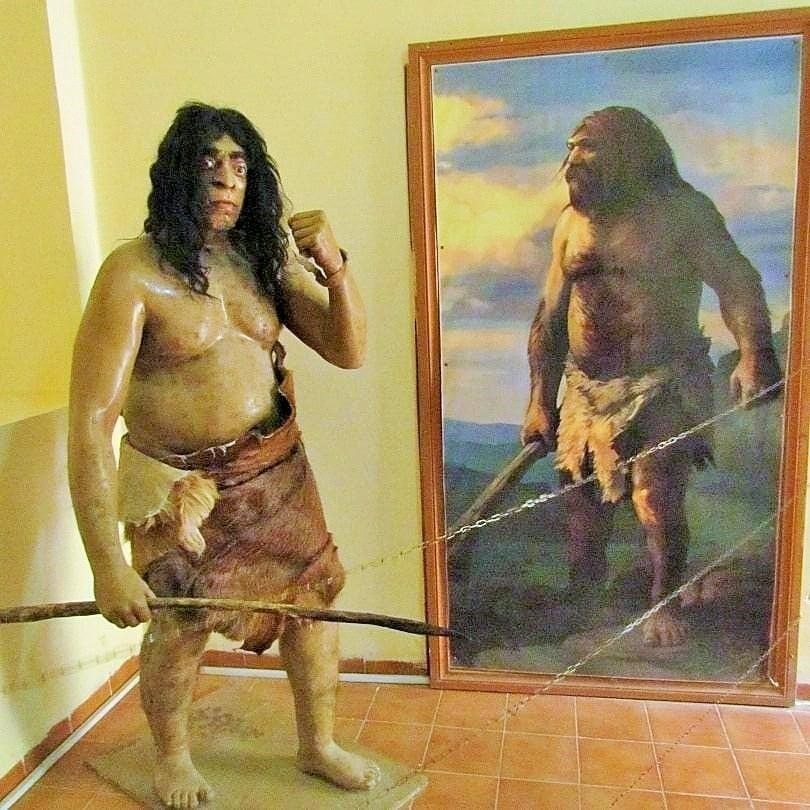
Features of Takyeh Beyglarbeygi
The Takyeh has three entrance doors, the main entrance is located on the southeast of the building. The secondary entrances to the building are located on the north and south sides, and the north entrance leads to a dead-end alley.
The main entrance has a portal decorated with Muqarnas work and plasterwork reliefs. There are two vertical rows of Tagh Nama (false arches) to the sides of this entrance. The lower false arch has Muqarnas work and plasterwork reliefs similar to the main entrance portal. This is while the top-row false arch is decorated with sculpted plaster statuettes of prominent Qajar figures.
After passing through this entrance, you enter the Hashti (vestibule) area. The vestibule ceiling is decorated with beautiful Rasmi-Bandi (traditional ceiling decoration patterns) and there are Taghcheh (niches) on the walls.
There is a wooden portal on the north wall of the vestibule that leads to houses surrounding the Takyeh. After the vestibule, you enter a rather long hallway. Its roof is decorated with beautiful Ma’ghali (Bannai script) decorations. There are also two wooden portals on the south side of the corridor that lead to the houses on the south side of the Takyeh.
The corridor leads you to the Takyeh courtyard with a fountain in the center. This Takyeh has a relatively large yard, the level of which is 2.5 meters lower than the alley level. There is a dome vault on the west side of the courtyard and there are two-story pavilions on the east side. There is a kitchen to the northeast of the courtyard, which was used to prepare food served in annual mourning rituals.
Different Sections of Kermanshah’s Takyeh Beyglarbeygi
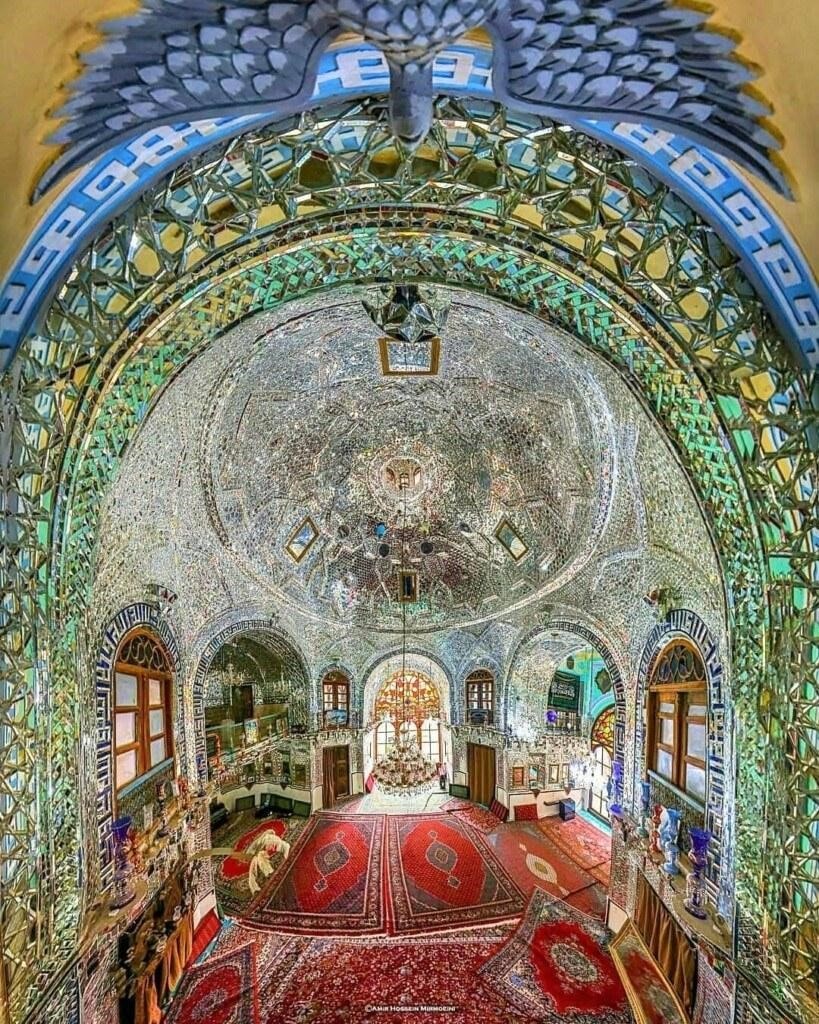
Rooms: After walking through the courtyard, the facade of Takyeh Beyglarbeygi attracts our attention, which has 24 rooms on two floors. The base of these rooms is one meter above the courtyard level, which can be accessed with stairs.
Each of the support rooms has 16 beautiful niches on the wall that are used to place objects. The rooms on the first floor of the Takyeh are used for housing accommodation and the upper floor serves as storage.
Hosseiniyeh: Takyeh Beyglarbeygi has a Hosseiniyeh, which has a two-story building and a dome. This Hosseinieh is adorned with many decorations such as mirrorwork, plaster columns, reliefs with plant patterns, and candle cressets.
Basement: The basement of the Takyeh includes a fountain, a summer dwelling, and several rooms. This basement is located in the northern part of the yard and can be accessed via several stairs. There are honeycomb-structured windows that provide air conditioning and function like wind catchers. The basement ceiling is made of wood and its rooms have brick vaults.
Visit Takyeh Beyglarbeygi in Kermanshah
Kermanshah has many tourist attractions and Beyglarbeygi Takyeh is undoubtedly one. This historical Takyeh and other historical attractions have made Kermanshah one of Iran’s most popular tourist destinations.
If you plan to travel to Kermanshah on an Iran tour package or independently, do not miss visiting this Takyeh. Destination Iran recommends visiting the exhibits of the first Paleolithic humans in the Zagros museum. There are some extremely rare objects that cannot be found in any other museum collections.
Where is Takyeh Beyglarbeygi?
Takyeh Beyglarbeygi is located in Bigleri Alley, Modares Street, in the old neighborhood of Feyz Abad in Kermanshah. You can see the location of this Takyeh below:
Frequently Asked Questions About Takyeh Beyglarbeygi
If you cannot find the answer to your question here, leave us a comment in the comment section below this post and ask your question. We will answer it as soon as we can.
What is the history of Kermanshah’s Takyeh Beyglarbeygi?
The construction of Takyeh Beyglarbeygi was started in 1892 by Abdullah Khan Farrash Bashi, nicknamed Beyglarbeygi. Construction lasted for 6 years. After that, over the course of 11 years, mirrorwork and plasterwork decorations were added to the building.
What are the architectural features of the Takyeh Beyglarbeygi building?
The type of architecture of Beyglarbeygi Takyeh dates back to the Qajar period and has a crescent shape. The west side of the building is designed in Zand architectural style, which has a vestibule shape. The entrance portal is decorated with plaster Muqarnas and beautiful plasterwork reliefs.
Inside the false arches are decorated with plaster statuettes of prominent Qajar figures. Mesh or honeycomb windows are installed in the basement, and the roof of the fountain house and summer dwelling in the basement is made from wooden beams and covered with clapboards. The rooms have brick vaults and are decorated with plasterwork.
Which museums are located in Takyeh Beyglarbeygi, Kermanshah?
The Museum of Manuscripts and Calligraphy and Zagros Paleolithic Museum are located in Takyeh Beyglarbeygi.
Who was Abdullah Khan Beyglarbeygi?
Abdullah Khan Beyglarbeygi was one of the most famous influential officials of Kermanshah during the Qajar period. He built the famous Takyeh Beyglarbeygi building and it was his Dar-ol-Hokoomeh or administrative establishment for many years. The book “Biography of Abdullah Khan Beyglarbeygi Kermanshah” was published by Hormoz Bigleri with the help of Kermanshah Publishing House.



